Art
Art and Monuments One Year Later. Rubin Museum #HonorNepal
The following is a brief video tribute to the Nepalese cultural heritage in honor of the anniversary of the 2015 Earthquakes.
For more information about the Rubin Museum of Art, including the Honoring Nepal installation and gallery programs, please visit rubinmuseum.org

Happiness is an Art
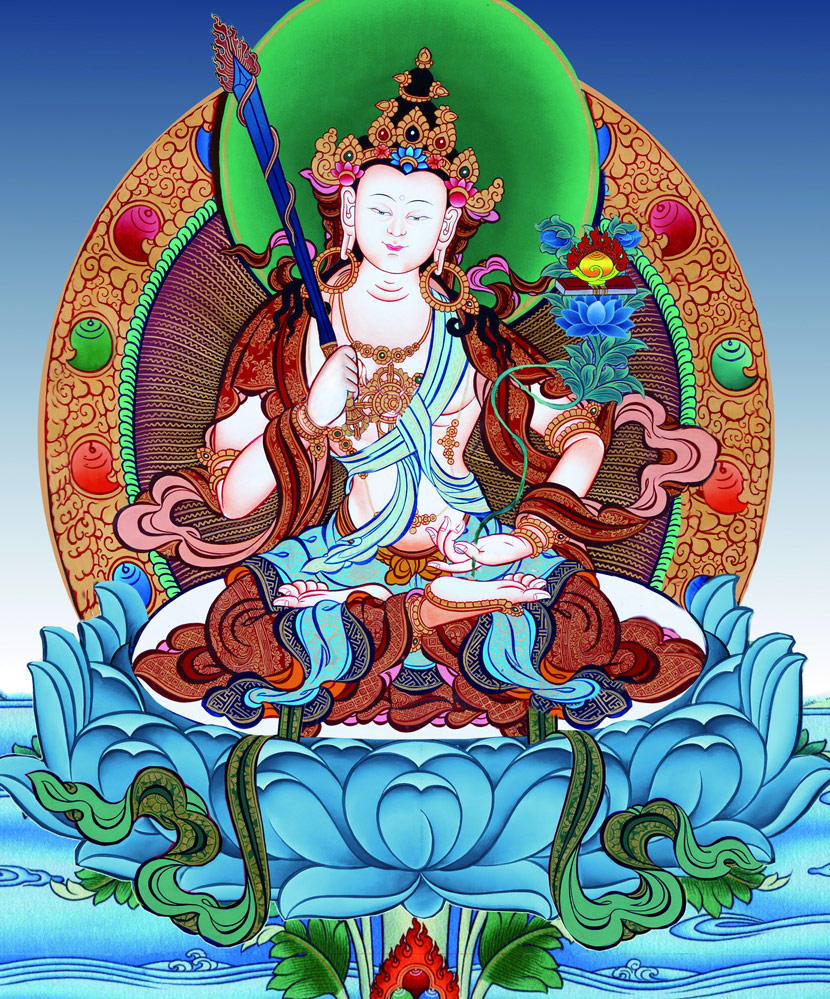
Akasagarbha: The Bodhisattva of Infinite Happiness
“Whether this moment is happy or not depends on you. It’s you that makes the moment happy. It’s not the moment that makes you happy.
With mindfulness, concentration and insight, any moment can become a happy moment.
Happiness is an art.”
Thich Nhat Hanh

Follow traditionalartofnepal.com on WordPress.com
Shoton Festival- Exhibition of Thangkas and Tibetan Masks in Lhasa
The Shoton Festival is held each summer in Lhasa and it is considered to be the largest Tibetan festival. Also known as the Yogurt Banquet festival it dates back to the 11th century and was originally a religious occasion, when local people would offer yogurt to monks who had finished their meditation retreats.
It is a very appealing event not only for Tibetans and Buddhists coming from different countries, but also for many travelers willing to discover this striking event on the roof of the world.
The festival mainly consists in exhibitions showing the art, tradition and the appealing culture of the Tibetan people. Very famous events are the Tibetan Opera Show and the Horsemanship and Yak Race Show. However the main event that open the festival is the display of the giant thangka showing the Great Buddha.
During the ritual more than 100 monks unveil an old 1,480 square-meter portrait of Sakyamuni knitted with colorful silk.
During the festival (this year from the 6th to the 12th of August) there are celebrations in the streets, squares and monasteries of Lhasa.
As part of this year’s festival, a grand exhibition of traditional Thangkas and Tibetan masks is staged at Norbu Lingka, the former summer palace of the Dalai Lamas.
Mandala: Sacred Geometry and Healing Art
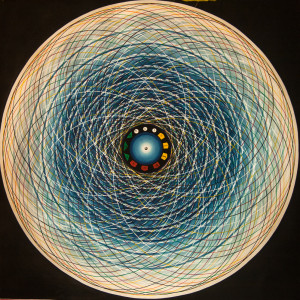 The word mandala is of Hindu origin and is derived from the root ‘manda’, which means essence, and the suffix ‘la’, meaning container.
The word mandala is of Hindu origin and is derived from the root ‘manda’, which means essence, and the suffix ‘la’, meaning container.
Mandala is a term that appears on a chapter of the Rig Veda, a collection of mantras or hymns chanted in Vedic ceremonies. The universe was believed to originate from these mantras, whose sacred sounds contained the genetic patterns of beings and things. This is the reason why it is possible to define “mandala” as a world-model.
In fact mandalas usually represent sacred places which, by their very presence in the world, remind a viewer of the immanence of sanctity in the universe and its potential in his or her self.
Generally speaking mandala is a term for any geometric symbol that represents the cosmic energy in a metaphysical or symbolic matter.
Mandala Buddhist Art
Among the many traditions of Buddhist art the three areas where the Tibetans have made the most significant contributions are mandalas, images of deities and portraiture. In the context of the Buddhist path the purpose of a mandala is to put an end to human suffering, to attain enlightenment and a correct view of reality. It is a mean to discover divinity by the realization that it resides within our own self.
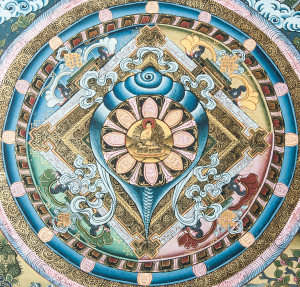 In Tibetan Buddhism mandalas are used for meditation and their specific designs reminding the practitioner of important guiding principle.
In Tibetan Buddhism mandalas are used for meditation and their specific designs reminding the practitioner of important guiding principle.
In fact it is used as visual aid for concentration and meditation leading to the attainment of insights and to activation of forces culminating in “Siddhi”, term used by tantric buddhism doctrine to define special psychic powers.
In its most common form, the mandala appears as a series of concentric circles. Each mandala has its own resident deity housed in the square structure situated concentrically within these circles. Its perfect square shape indicates that the absolute space of wisdom is without aberration. This square structure has four elaborate gates. These four doors symbolize the bringing together of the four boundless thoughts namely – loving kindness, compassion, sympathy, and equanimity. Each of these gateways is adorned with bells, garlands and other decorative items.
This square form defines the architecture of the mandala described as a four-sided palace or temple.
A palace because it is the residence of the presiding deity of the mandala, a temple because it contains the essence of the Buddha.
Mandala Healing Art
Painting mandalas isn’t an activity done merely in religious contexts.
It’s an art for everybody. And it’s a very effective Therapeutic Art !
Carl Gustav Jung introduced the Eastern concept of the mandala to Western thought and believed this symbol is a representation of the individuality and a reflection of the Self.
According to Jung, mandalas symbolize “a safe refuge of inner reconciliation and wholeness.”
The creative process of making mandalas helps to revisit the universal experience embodied in the circle and, as Jung found, helps us to experience and reflect on the essence of who we are in the here and now.
Not only are Mandalas very healing to paint but they radiate healing energy.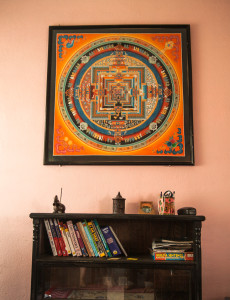
In fact when you have such a mandala in your house, its presence creates a powerful field of energy.
That is why we suggest our customers to place their mandala in a room where they spend five or more hours each day.
This could be your bedroom, your office or your living room.
If you are travelling in Nepal and you are willing to learn how to paint beautiful thangka and mandala paintings feel free to send us a message or contact us using your favorite social media:
Facebook
Twitter
Instagram
Sunapati Thanka Painting School
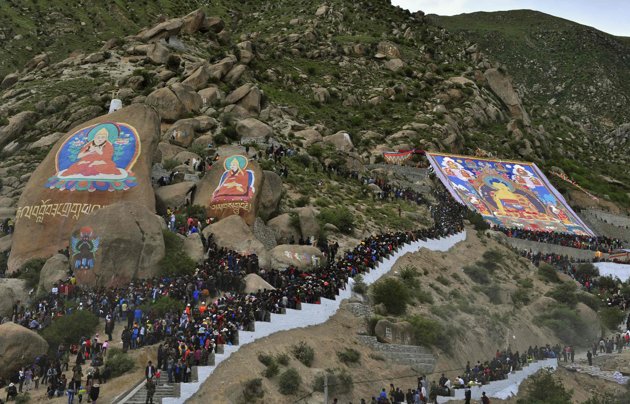
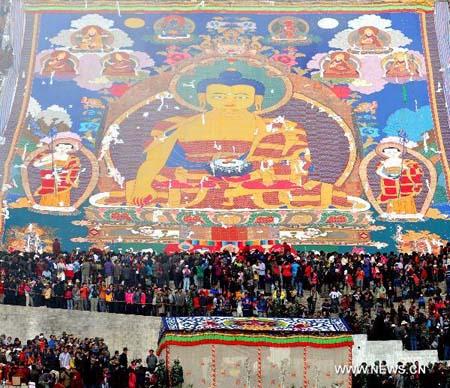
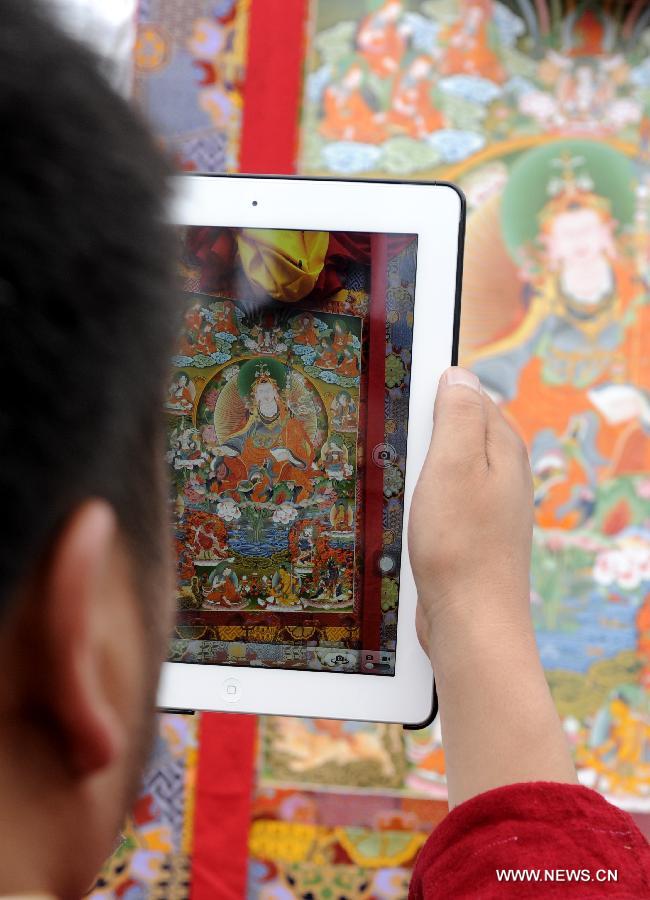
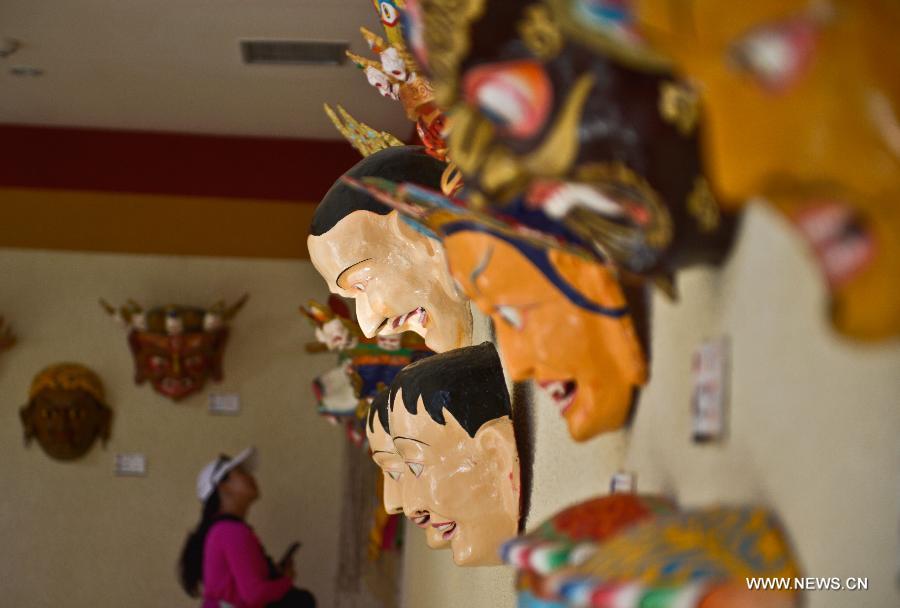
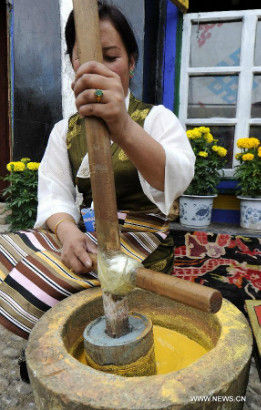
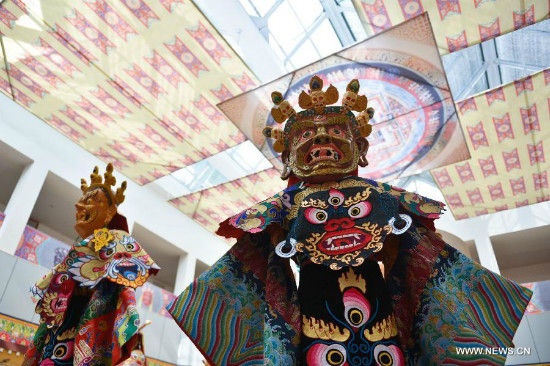
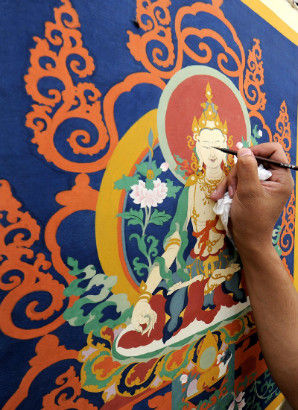
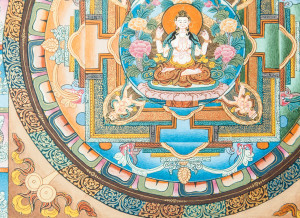
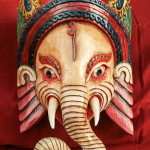 Ganesh Mask Design #01
Ganesh Mask Design #01 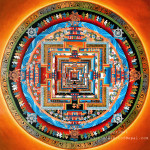 Kalachakra Mandala
Kalachakra Mandala 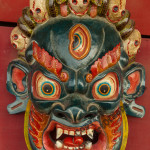 Wrathful Bhairava Mask
Wrathful Bhairava Mask 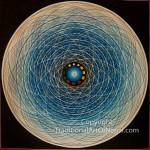 Universe Om Mandala
Universe Om Mandala 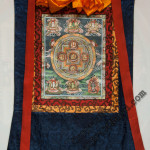 Silk Frame #02
Silk Frame #02 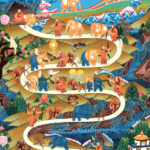 Samatha Meditation Thangka
Samatha Meditation Thangka 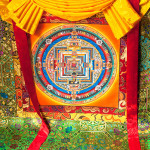 Modern Design Brocades
Modern Design Brocades 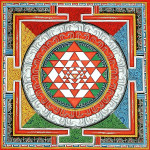 Sri Yantra Mandala
Sri Yantra Mandala 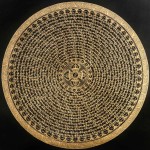 Yin Yang Mantra Mandala
Yin Yang Mantra Mandala 





